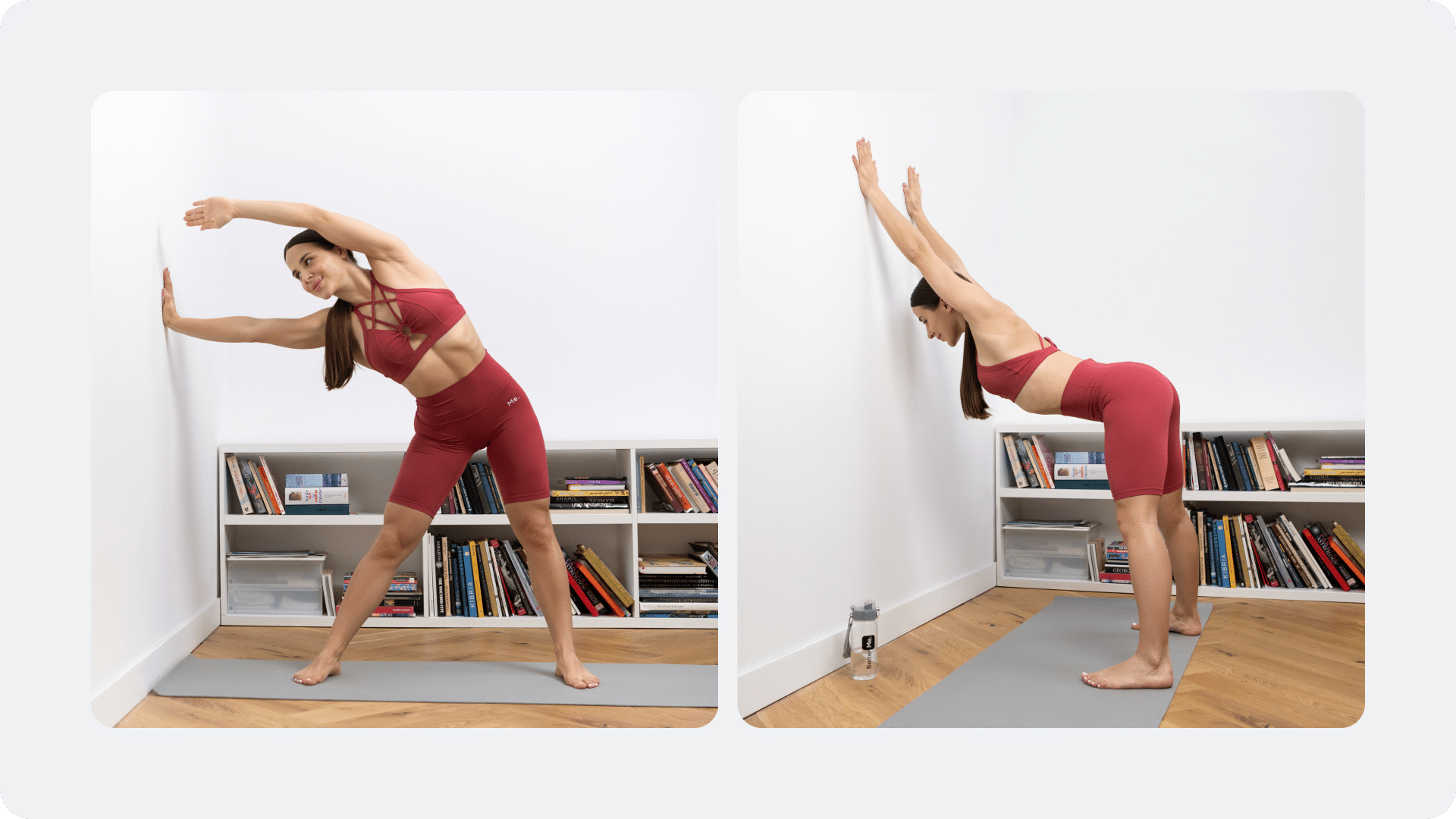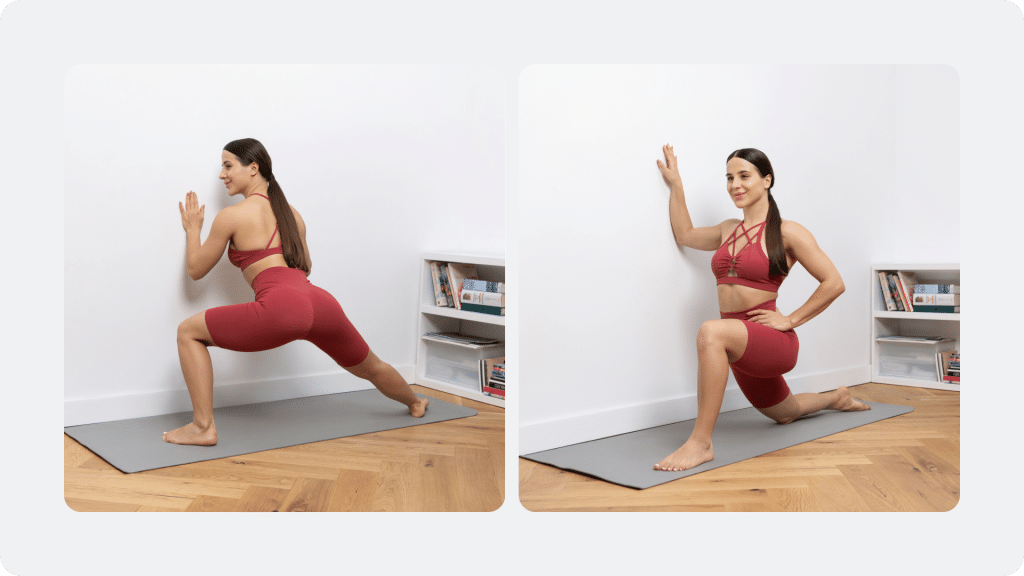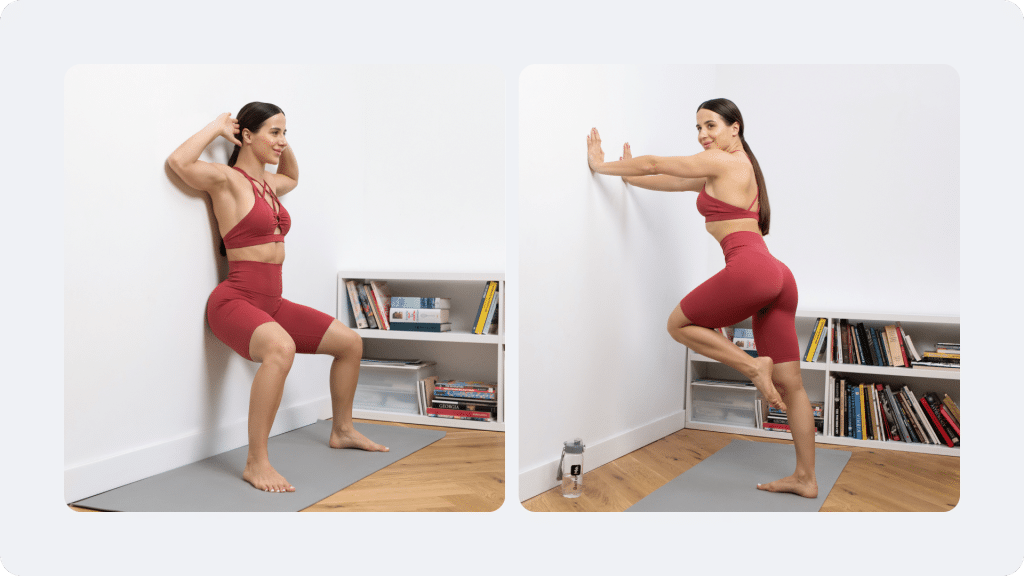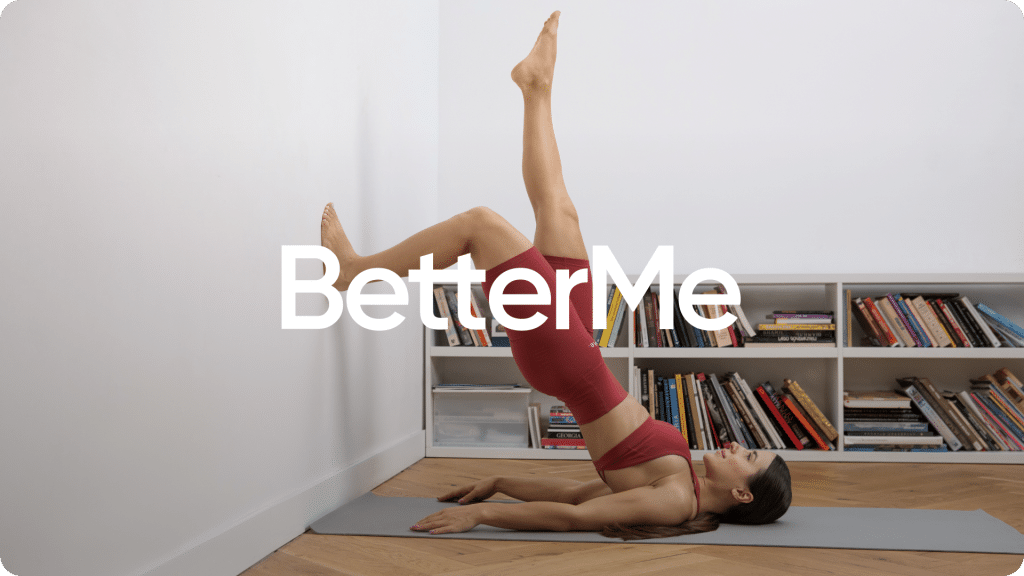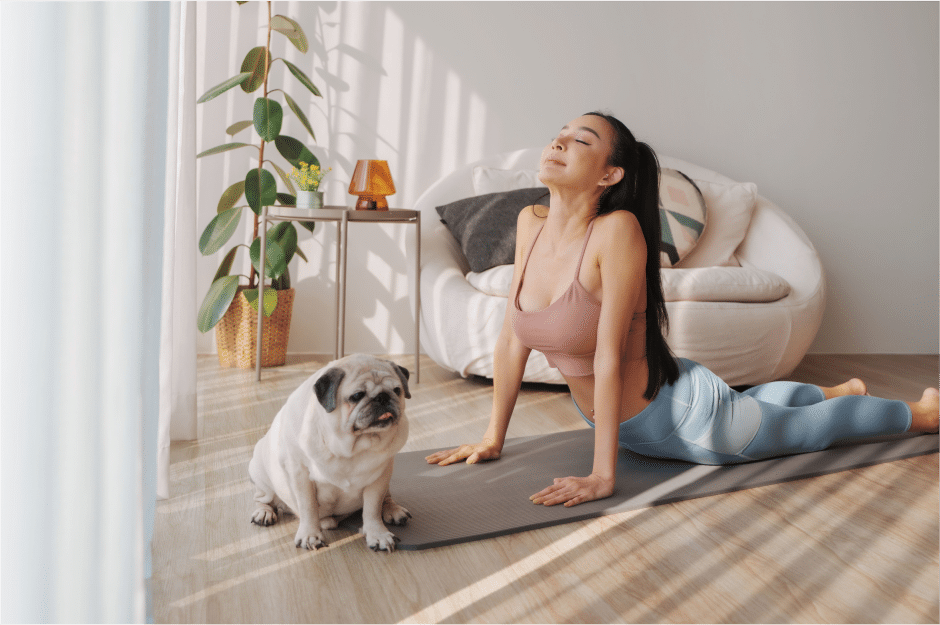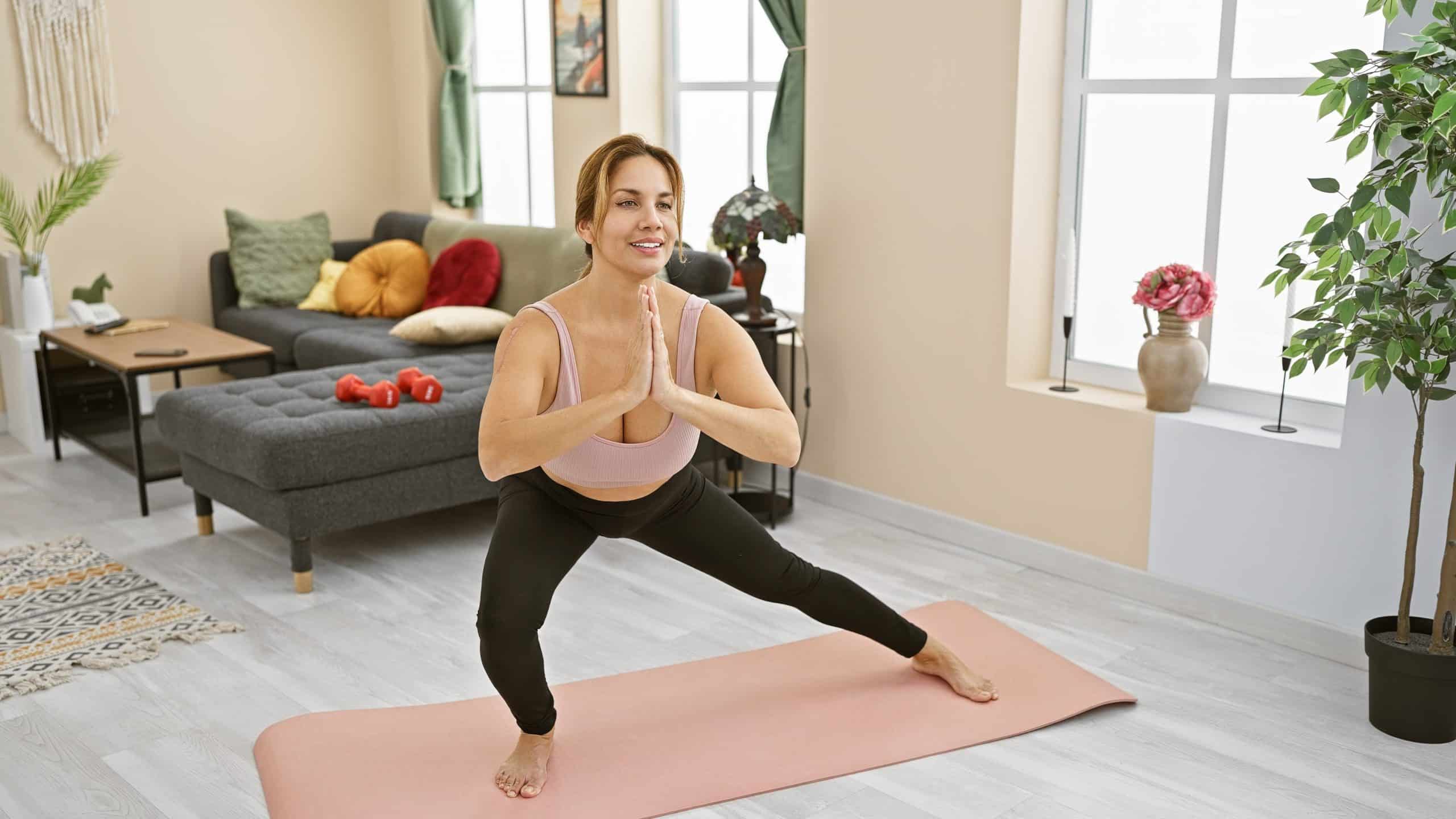Standing Pilates is perfect for days when you’re running short on time or if you’re traveling. Always needing to carry around and roll out a yoga mat is inconvenient, but that doesn’t mean you should skip your workouts. It only takes a few minutes to complete a standing Pilates session. And when you’re done, you’ll feel accomplished!
Keep reading to learn more about standing Pilates and a few other exercises to help you get started.
What Are Standing Pilates Exercises?
Joseph Pilates initially introduced Pilates as floor-based exercises. He developed this style of training while he was a prisoner during World War I. The original version of Pilates was later expanded upon by Joseph and other practitioners, ultimately leading to the creation of standing Pilates as it is known today.
Standing Pilates adapts many classical Pilates mat exercises into equivalent standing versions. Although balance can sometimes be a limiting factor when performing certain standing Pilates movements, it is possible to address this. Increasing core strength, body awareness, and confidence can make it easier to stay balanced while you perform Pilates (1). Although it may be difficult to balance during some movements, there are many standing Pilates movements where it is easy to balance.
How To Do Standing Pilates Exercises?
Standing Pilates is effective, regardless of how long you’ve been exercising. Check out these easy standing exercises to add a new twist to your Pilates routine.
Heel Touch Calf Raise
Follow these steps:
- Stand with your heels touching and your toes pointing outward.
- Place your hands behind your head.
- Lift your heels off the ground and lower them back down without separating them.
- Perform 12 to 15 repetitions.
The aim is to remain balanced without leaning forward or backward. Try to go straight up and down as if you’re floating. You’ll feel this primarily in your calves.
Read More: The Pilates For Runners Guide: Use This To Improve Your Core Strength
Marching
Here are the steps to follow when performing the marching variation:
- Stand straight with your arms held at shoulder level and crossed. Stand upright, avoiding slouching or locking your knees.
- Lift one leg as high as possible by bending at your knee while continuing to stand upright. Then, lower that leg and switch sides.
- Perform 12 to 15 repetitions.
Wall Roll Down
To perform a wall roll down:
- Stand with your back firmly pressed against a wall, keeping your heels approximately 10 inches from the wall. Stand with your shoulder blades pulled back and your arms held by your side.
- Start rolling your body forward from top to bottom, initially bending your head forward.
- While keeping your feet planted and avoiding bending your knees, gradually curl your spine as you bend forward. Start by bending at the top and gradually working down one vertebra at a time. As you do this, continue reaching down with your arms.
- Continue until your torso is bent fully forward.
- To return to the starting position, repeat the process in reverse. Gradually raise your body by uncurling your torso one vertebra at a time, finishing by raising your head.
- Continue until you return to your starting position.
- Perform 4 to 6 repetitions.
Does Standing Pilates Work?
Standing Pilates exercises are low-impact, making them more accessible for more people. Despite this, they still have positive impacts on your health and fitness when compared to not exercising at all, including:
Improves Core Power
Most standing Pilates exercises require you to maintain the position of your torso in a fixed way to perform the movement successfully. This requires your core to get involved in order to keep it stable. Using your core to stabilize your torso will make it better at doing this in your daily life and it will lead to improved core stability. The effects of this are greater for unilateral movement variants, which are those performed on one foot (2).
Supports Increased Lower-Body Strength and Muscular Endurance
Although there are more effective ways of increasing lower-body strength, such as lifting weights, Pilates can help increase the strength of muscles in your lower body. This training effect will only be minimal if you have a history of performing high-resistance exercise such as weight lifting. However, if you’re new to exercise, you may experience some meaningful strength gains. Pilates is best suited for increasing the endurance of the muscles that are involved. The muscles trained vary depending on the movement, but will generally focus on lower-body muscles such as the gluteus maximus (the butt) and the calves (lower leg) (2).
Enhances Balance
Standing Pilates can help improve your balance by making you more aware of your body (3) and improving your core stability. The effect it has on your core stability is worth noting as it reduces your fall risk, which is important – particularly later in life. This is why having standing Pilates in your toolbox will provide you with more ways to effectively achieve your balance-related exercise goals.
Dropping pounds by the dozens without putting yourself through the wringer is everyone’s weight loss pipe dream. But what if we told you that the BetterMe app can make that happen? Keep yourself in prime shape with our fat-blasting workouts, delicious budget-sparing recipes, and body-transforming challenges with our app!
How to Do Pilates Standing Up
There are a variety of different Pilates movements. There are many variations available that can be used to tailor your workout program to your personal goals: mat versions, chair versions, standing versions, and more. When doing standing pilates exercises:
- Prepare for your standing Pilates workout by performing a general warm-up. This warm-up should last 5-10 minutes and involve walking or cycling at a slow non-fatiguing pace.
- Start your main workout by focusing on movements that feel harder. Movements that involve moving more joints or using more muscles should be done earlier in your Pilates workout.
If you have a pre-existing mobility issue or physical limitation that may prevent you from performing a particular Pilates movement, it’s fine to substitute it for a version that better matches your capabilities. If you have difficulty navigating this, it could be beneficial to consult a trained and educated fitness professional for more assistance.
What Is the Hardest Type of Pilates?
Some Pilates movements are more difficult than others. Some of the more difficult pilates movements include:
- Backbend on the ladder barrel
- Advanced thigh stretch on the reformer
- Candlestick on the Cadillac
- Advanced mat teaser with boomerang
- Control balance off the reformer
These exercises place greater demand on your body and its muscles than other more conventional movements. However, it’s best to focus on the exercises you enjoy the most and design a fun workout routine for yourself. In this way, it will be way easier to stick to.
Read More: If I Were You, I’d Use This Wall Pilates Program To Activate My Body’s Natural Movement Patterns
The Bottom Line
To sum up, standing Pilates exercises offer a different approach to fitness that can support your health goals and help you stay active. With that in mind, step up, find your balance, and let the transformative benefits of standing Pilates lead you to a stronger, more vibrant you. If you find that you need more assistance, there’s no harm in reaching out to a certified personal trainer who will help you optimize your training and make the most of your fitness journey
DISCLAIMER:
This article is intended for general informational purposes only and does not serve to address individual circumstances. It is not a substitute for professional advice or help and should not be relied on for making any kind of decision-making. Any action taken as a direct or indirect result of the information in this article is entirely at your own risk and is your sole responsibility.
BetterMe, its content staff, and its medical advisors accept no responsibility for inaccuracies, errors, misstatements, inconsistencies, or omissions and specifically disclaim any liability, loss or risk, personal, professional or otherwise, which may be incurred as a consequence, directly or indirectly, of the use and/or application of any content.
You should always seek the advice of your physician or other qualified health provider with any questions you may have regarding a medical condition or your specific situation. Never disregard professional medical advice or delay seeking it because of BetterMe content. If you suspect or think you may have a medical emergency, call your doctor.
SOURCES:
- The 4 most important types of exercise (2022, health.harvard.edu)
- Effect of core stability training using pilates on lower extremity muscle strength and postural stability in healthy subjects (2012, Isokinetics and Exercise Science)
- An online pilates exercise program is effective on proprioception and core muscle endurance in a randomized controlled trial (2022, Irish Journal of Medical Science)

